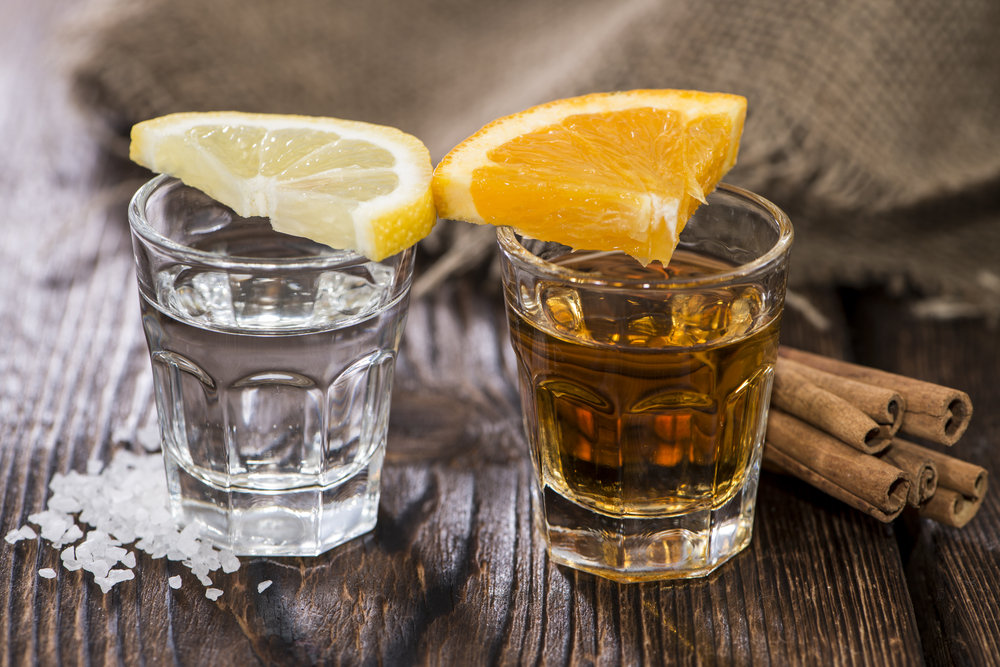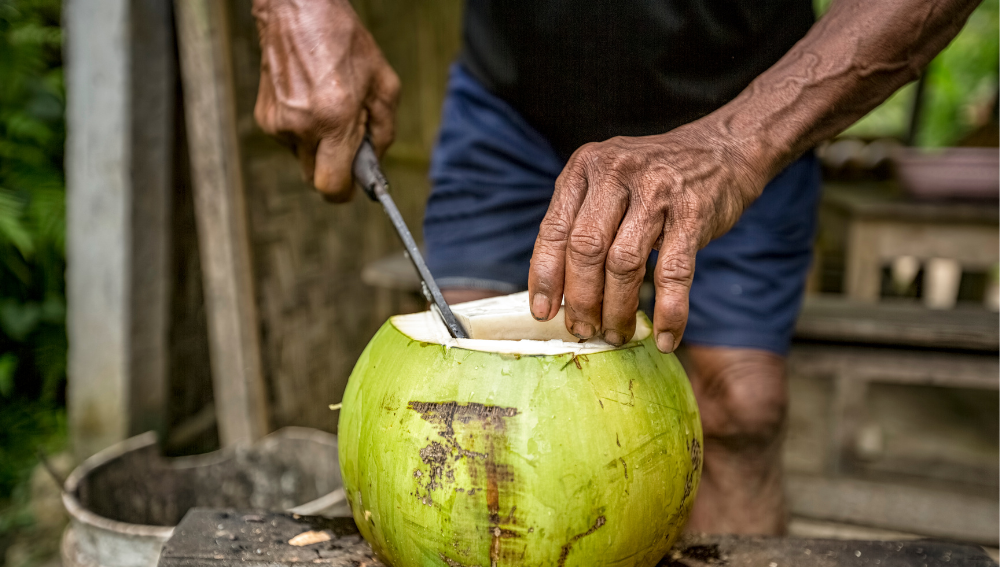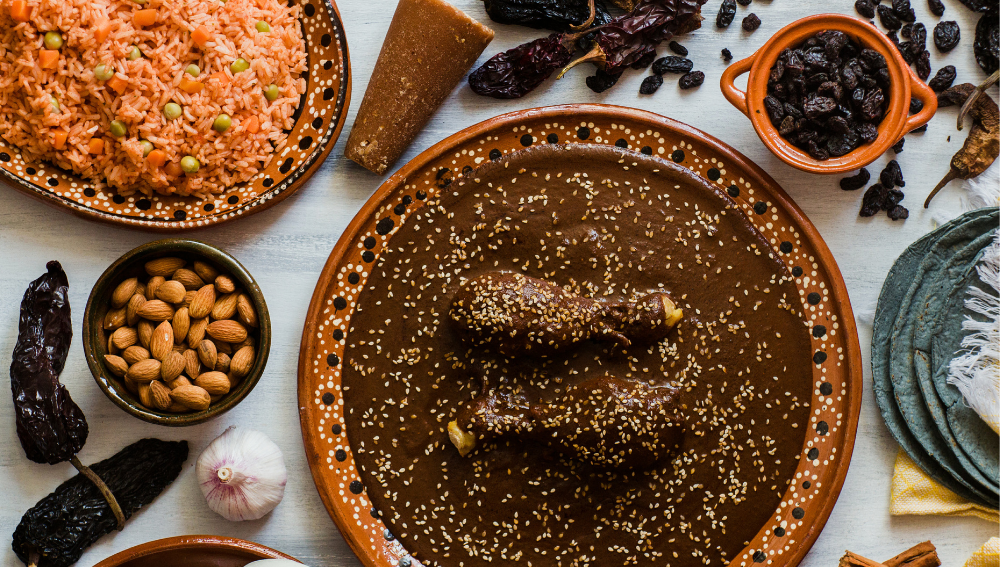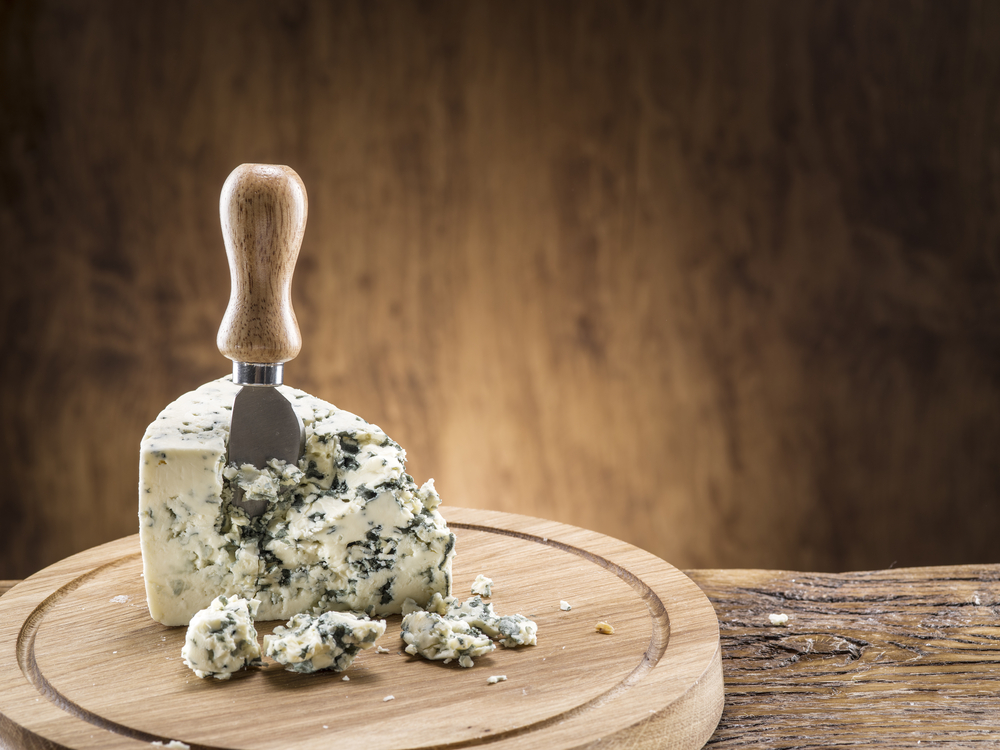I have always wondered what tequila tastes like. This popular Mexican spirit is known for its unique flavor and is enjoyed by many around the world.
Tequila is made from the blue agave plant, which is native to Mexico. It is a distilled alcoholic beverage that comes in different varieties, each with its own unique taste and characteristics.
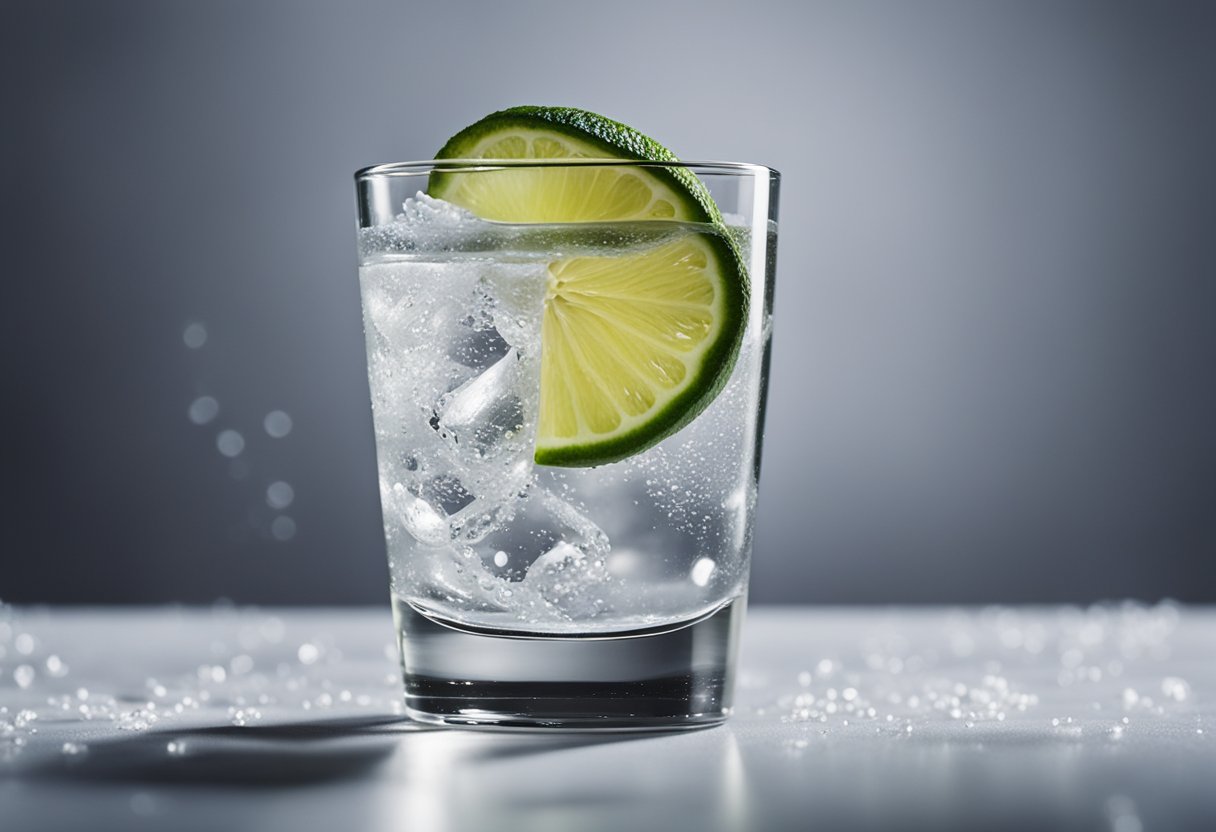
Understanding tequila and its various types can help you choose the best one that suits your taste buds. Tequila has a distinctive flavor that is sweet, floral, and earthy.
The taste can vary depending on the type of tequila, how it is produced, and how it is aged. Some tequilas have a smoky flavor, while others have a more complex taste profile.
Key Takeaways
- Tequila is a distilled alcoholic beverage made from the blue agave plant, native to Mexico, and has a unique sweet, floral, and earthy taste.
- There are different types of tequila, each with its own unique taste and characteristics, depending on how it is produced and aged.
- Understanding the various types of tequila can help you choose the best one that suits your taste buds.
Understanding Tequila
https://www.youtube.com/watch?v=BFIvZ-F4GVM
Tequila is a distilled alcoholic beverage made from the blue agave plant. It is a popular spirit that originated in Mexico and is enjoyed by people all over the world. Tequila is known for its unique flavor and aroma that can be attributed to the agave plant and the aging process.
What is Tequila
Tequila is made from the blue agave plant, which is primarily grown in the Jalisco state of Mexico. The plant is harvested and the leaves are removed to reveal the core or piña. The piña is then roasted and crushed to extract the juice, which is then fermented and distilled to create tequila.
Tequila has a distinctive taste that can vary depending on the type of tequila and the aging process. It can have a sweet, earthy, and spicy flavor with notes of cinnamon, green apple, and dark chocolate. The aroma of tequila includes scents of agave, oak, and citrus.
Types of Tequila
There are several types of tequila, each with its own unique flavor and aging process. The most common types of tequila are blanco, reposado, añejo, and extra añejo.
- Blanco: Also known as silver or white tequila, this type of tequila is unaged and has a clear color. It has a strong agave flavor and is usually used in cocktails.
- Reposado: This type of tequila is aged for a minimum of two months and up to one year in oak barrels. It has a mellow flavor with a hint of oak and is a popular choice for sipping.
- Añejo: This type of tequila is aged for a minimum of one year and up to three years in oak barrels. It has a smooth and complex flavor with notes of vanilla and caramel.
- Extra Añejo: This type of tequila is aged for a minimum of three years in oak barrels. It has a rich and complex flavor with notes of dark chocolate and tobacco.
Tequila can also be classified as 100% agave or mixto. 100% agave tequila is made only from blue agave and has a higher quality and smoother taste. Mixto tequila is made from a combination of blue agave and other sugars and has a harsher taste.
In conclusion, tequila is a unique and flavorful spirit that is enjoyed by people all over the world. It is made from the blue agave plant and can have a sweet, earthy, and spicy flavor with notes of cinnamon, green apple, and dark chocolate.
There are several types of tequila, each with its own unique flavor and aging process. It is important to choose the right type of tequila for your taste preferences and to enjoy it responsibly.
The Making of Tequila
Tequila is a distilled spirit made from the blue agave plant, which is native to Jalisco, Mexico. The production of tequila involves several steps, including agave harvesting, roasting, and distillation.
Agave Harvesting
The first step in making tequila is harvesting the agave plant. The agave plant takes several years to mature before it can be harvested.
Once the agave plant is mature, the leaves are cut off, and the heart of the plant, known as the piña, is harvested. The piña is then transported to the distillery, where it is roasted.
Distillation Process
The roasted piñas are then crushed to extract the juice, which is fermented to produce alcohol. The alcohol is then distilled to produce tequila. The distillation process involves heating the fermented juice to produce steam, which is then condensed to produce tequila.
There are two main types of tequila: 100% agave tequila and mixed tequila. 100% agave tequila is made using only agave, while mixed tequila is made using a combination of agave and other sugars. The type of tequila you choose will affect the taste and quality of the final product.
Tequila production is highly regulated by the Mexican government, and only tequila produced in certain regions of Mexico, including the highlands of Jalisco, can legally be called tequila.
In conclusion, the production of tequila is a complex process that involves several steps, including agave harvesting, roasting, and distillation. The type of tequila you choose will affect the taste and quality of the final product.
Tasting Tequila
Tequila Flavor Profile
Tequila has a unique flavor profile that sets it apart from other spirits. Its main ingredient, the blue agave plant, gives it a sweet and earthy flavor with notes of citrus and fruit. Depending on the aging process, tequila can also have flavors of caramel, vanilla, cinnamon, and chocolate.
Blanco tequila, also known as silver or white tequila, is bottled immediately after the distillation process, giving it a bright and fresh taste with strong notes of agave and pepper.
Reposado tequila is aged in oak barrels for at least two months, giving it a smoother and more complex flavor with hints of vanilla, honey, and spice. Anejo tequila is aged in oak barrels for at least one year, resulting in a darker and smokier flavor with notes of chocolate, nut, and black pepper.
Tequila’s aroma is just as important as its flavor. A good tequila should have a pleasant and inviting aroma with notes of agave, oak, and citrus.
How to Taste Tequila
Tasting tequila is a sensory experience that involves the eyes, nose, and mouth. Here’s how to taste tequila like a pro:
- Look at the tequila: Observe the color and clarity of the tequila. Blanco tequila should be clear, while Reposado and Anejo tequilas will have a golden or amber color.
- Smell the tequila: Bring the glass to your nose and take a deep breath. Note the aroma and try to identify the different scents.
- Taste the tequila: Take a small sip and let it sit on your tongue for a few seconds. Swirl it around in your mouth to fully experience the flavors. Note the sweetness, spiciness, and earthy flavors.
- Finish the tequila: Swallow the tequila and note the aftertaste. A good tequila should have a smooth and pleasant finish.
When tasting tequila, it’s important to use a proper tequila glass, which is tall and narrow with a slightly curved lip. This allows the aroma to be concentrated and the flavors to be fully experienced.
In conclusion, tequila has a complex and unique flavor profile with notes of sweet, citrus, fruity, earthy, and spicy flavors.
Tasting tequila is a sensory experience that involves observing the color, smelling the aroma, tasting the flavors, and noting the finish. With these tips, you can fully appreciate the complexity and richness of tequila.
Tequila Varieties and Their Characteristics
https://www.youtube.com/watch?v=YjChaS_G2m8
Tequila is a versatile spirit that comes in different varieties, each with its unique characteristics. The four main types of tequila are blanco, reposado, añejo, and extra añejo.
Blanco Tequila
Blanco tequila, also known as silver or white tequila, is the purest form of tequila. It is bottled immediately after distillation and does not undergo any aging process.
Blanco tequila is known for its clear color and strong flavor. It has a smooth, clean taste with a slight sweetness and a hint of pepper. It is often used in cocktails due to its strong flavor.
Reposado Tequila
Reposado tequila is aged for a minimum of two months and a maximum of one year in oak barrels. The aging process gives it a golden color and a smooth, rich taste.
Reposado tequila has notes of vanilla and caramel, making it a popular choice for sipping. It is also a great choice for cocktails that require a smooth, aged tequila.
Añejo Tequila
Añejo tequila is aged for a minimum of one year and a maximum of three years in oak barrels. The aging process gives it a darker color and a more complex flavor. Añejo tequila has notes of oak, chocolate, and tobacco.
It has a smooth, rich taste and is often sipped neat or on the rocks. It is also used in cocktails that require a more complex, aged tequila.
Extra Añejo Tequila
Extra Añejo tequila is aged for a minimum of three years in oak barrels. The aging process gives it a dark color and an oaky, smooth flavor.
Extra Añejo tequila is the most expensive type of tequila due to its long aging process. It is often sipped neat or on the rocks and is used in cocktails that require a high-quality, aged tequila.
In conclusion, the type of tequila you choose depends on your personal preference and the occasion. Blanco tequila is great for cocktails, while reposado and añejo tequilas are perfect for sipping.
Extra Añejo tequila is the most expensive and is reserved for special occasions. Regardless of the type of tequila you choose, it is important to look for quality and smoothness in every sip.
Tequila in Cocktails
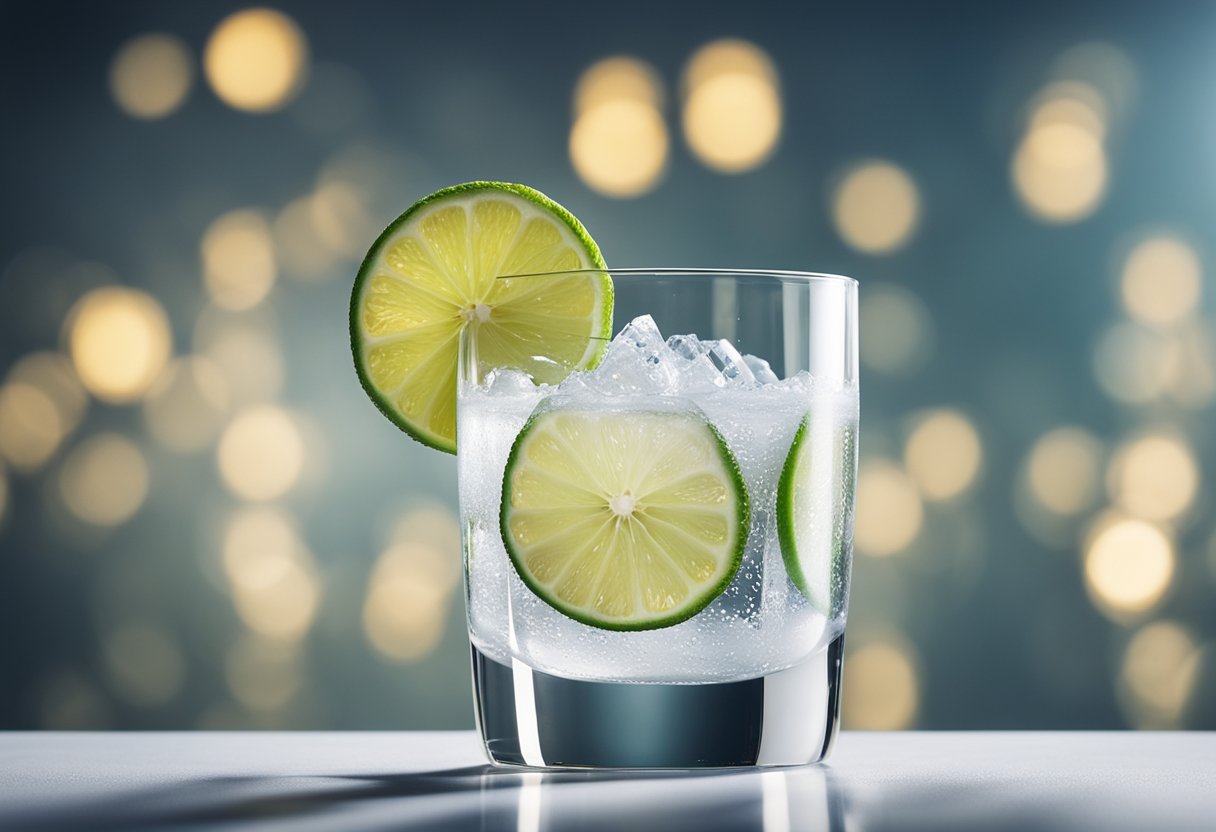
Tequila is a versatile spirit that can be used in a variety of cocktails. In this section, I will discuss two popular tequila-based cocktails: the Margarita and other tequila-based cocktails.
Tequila in Margarita
The Margarita is perhaps the most popular tequila cocktail. It is a classic cocktail that is simple to make and delicious to drink. The basic recipe consists of tequila, lime juice, and triple sec.
The drink is typically served in a salt-rimmed glass. The tequila in the Margarita provides a sweet and slightly spicy flavor that is complemented by the tartness of the lime juice.
Margaritas can be made with different types of tequila, including blanco, reposado, and añejo. Blanco tequila is the most common type of tequila used in Margaritas. It has a clean and crisp flavor that pairs well with the other ingredients in the cocktail. Reposado and añejo tequilas have a more complex flavor profile that can add depth to the Margarita.
Margaritas can also be made with different mixers, such as fruit juices, agave nectar, and spicy peppers. These mixers can add a unique twist to the classic Margarita and create a new flavor experience.
Other Tequila-Based Cocktails
Tequila can also be used in a variety of other cocktails. Some popular tequila-based cocktails include:
- Paloma: a refreshing cocktail made with tequila, grapefruit soda, and lime juice.
- Tequila Sunrise: a colorful cocktail made with tequila, orange juice, and grenadine.
- Bloody Maria: a spicy twist on the classic Bloody Mary made with tequila instead of vodka.
Tequila can also be used in spicy cocktails, such as the Spicy Margarita or the Jalapeño Margarita. These cocktails add a kick to the classic Margarita by incorporating spicy peppers into the recipe.
In conclusion, tequila is a versatile spirit that can be used in a variety of cocktails. The Margarita is the most popular tequila cocktail, but there are many other tequila-based cocktails to explore. Tequila can be paired with different mixers and spices to create new and unique flavor experiences.
Tequila vs Other Spirits
When it comes to distilled spirits, there are many options to choose from. Tequila is a unique spirit that is made from the blue agave plant and is only produced in Mexico.
However, how does it compare to other popular spirits like mezcal, whiskey, and vodka? In this section, I will explore the differences and similarities between tequila and other spirits.
Tequila vs Mezcal
Tequila and mezcal are both made from the agave plant, but they have distinct differences in taste and production. Mezcal is produced in various regions of Mexico and can be made from any type of agave plant, while tequila can only be made from blue agave and must be produced in specific regions of Mexico.
Mezcal has a smokier flavor due to the production process, which involves roasting the agave plant in an underground pit before distillation. Tequila, on the other hand, has a more herbaceous and earthy flavor.
Tequila vs Whiskey
Tequila and whiskey are both popular spirits, but they have very different flavor profiles. Whiskey is typically made from grains like barley, wheat, or rye, while tequila is made from the agave plant.
Whiskey is aged in barrels, which gives it a distinct oaky flavor, while tequila is typically aged in stainless steel or oak barrels for a shorter period of time. Tequila has a more vegetal taste with notes of citrus and spice, while whiskey has a rich, complex flavor with notes of caramel, vanilla, and smoke.
Tequila vs Vodka
Tequila and vodka are both distilled spirits, but they have very different flavor profiles. Vodka is typically made from grains like wheat, rye, or corn, while tequila is made from the agave plant.
Vodka is typically distilled multiple times to remove impurities and create a neutral flavor, while tequila is distilled once or twice to preserve the agave flavor. Vodka has a neutral taste with a slight burn, while tequila has a distinct vegetal flavor with notes of citrus and spice.
In conclusion, tequila has a unique flavor profile that sets it apart from other spirits like mezcal, whiskey, and vodka.
While it shares some similarities with these spirits, it has distinct differences in taste and production that make it a favorite among many. Whether you prefer tequila on the rocks or in a cocktail, its bold flavor is sure to leave an impression.
Health Benefits of Tequila
I have always been curious about the health benefits of tequila. While it is widely known that excessive alcohol consumption can be harmful to health, moderate consumption of tequila has been linked to several health benefits. Here are some of the potential health benefits of tequila:
Contains Agavins
Agavins, a type of sugar found in agave plants, are the primary sweetener in tequila. Unlike other sugars, agavins are non-digestible and do not raise blood sugar levels. This makes tequila a suitable drink for people with diabetes or those who are watching their sugar intake.
May Help with Weight Loss
Tequila has been linked to weight loss due to its low-calorie content and metabolism-boosting properties. A shot of tequila after a meal may help aid digestion and stimulate the metabolism, which can lead to weight loss.
May Improve Heart Health
Moderate consumption of tequila has been linked to improved heart health. Tequila contains antioxidants that can help reduce inflammation and prevent the oxidation of LDL cholesterol, which is known to cause heart disease.
May Boost Bone Health
Tequila contains high levels of calcium, which is essential for maintaining strong bones. Drinking moderate amounts of tequila may help prevent bone loss and reduce the risk of osteoporosis.
May Reduce the Risk of Type 2 Diabetes
Tequila has been shown to help regulate insulin levels and improve glucose absorption. This may reduce the risk of developing type 2 diabetes.
While tequila does have some potential health benefits, it is important to remember that excessive consumption can be harmful. Drinking in moderation is key to reaping the potential health benefits of tequila.
Tequila Terminologies
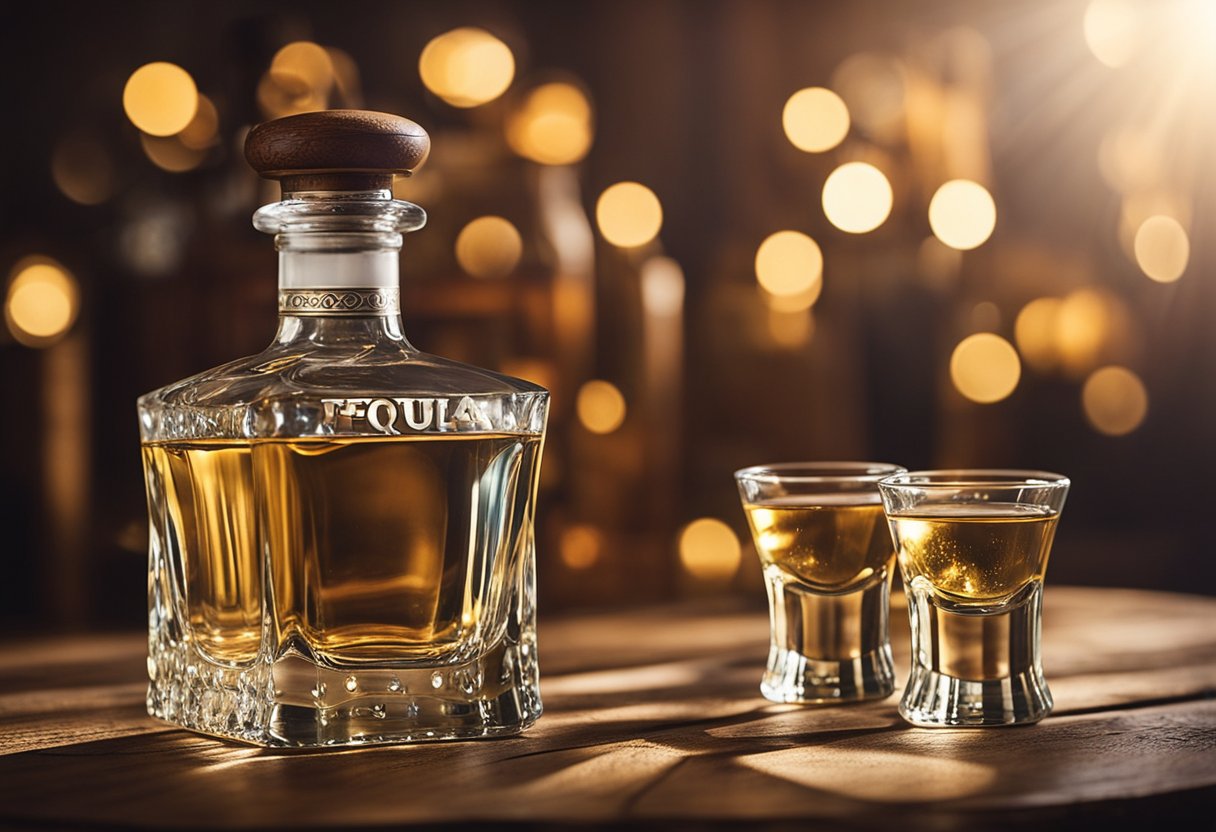
Tequila is a complex spirit with a rich history and a unique flavor profile. Understanding the different tequila terminologies is essential to appreciate the nuances of this popular drink. In this section, I will explain some of the most important tequila terms that you should know.
Reposado
Reposado is a type of tequila that has been aged in oak barrels for a minimum of two months and up to one year. This aging process gives the tequila a smooth and mellow flavor, with hints of vanilla and caramel.
Reposado tequila is a popular choice for sipping and mixing, and it pairs well with citrus and spicy flavors.
Blanco
Blanco, also known as silver or white tequila, is a clear and unaged spirit that is bottled immediately after distillation.
This type of tequila has a strong and robust flavor, with notes of citrus, pepper, and agave. Blanco tequila is often used in cocktails, and it adds a bold and distinctive flavor to any drink.
Añejo
Añejo is a type of tequila that has been aged in oak barrels for at least one year, but no more than three years. This aging process gives the tequila a smooth and complex flavor, with notes of wood, spice, and caramel. Añejo tequila is a premium spirit that is often sipped neat or on the rocks.
Joven
Joven, also known as gold or young tequila, is a blend of blanco and reposado tequila. This type of tequila has a smooth and balanced flavor, with a hint of oak and a touch of sweetness. Joven tequila is often used in cocktails, and it adds a rich and complex flavor to any drink.
ABV
ABV stands for alcohol by volume, which is the percentage of alcohol in a given volume of tequila. Tequila typically has an ABV between 35% and 55%, with most brands falling around 40%.
The ABV of tequila can affect its flavor profile, with higher ABV tequilas having a stronger and more intense flavor.
Finish
The finish of tequila refers to the aftertaste that lingers in your mouth after you take a sip. The finish can be smooth and mellow, with notes of vanilla and caramel, or it can be sharp and spicy, with a hint of pepper and agave.
The finish of tequila can vary depending on the type of tequila, the aging process, and the ABV.
Terroir and Soil
Terroir and soil refer to the environmental factors that influence the flavor of tequila. The agave plants used to make tequila are grown in specific regions of Mexico, and the soil, climate, and altitude of these regions can affect the flavor of the agave.
Tequila made from agave grown in the highlands tends to be sweeter and more floral, while tequila made from agave grown in the lowlands tends to be earthier and more herbaceous.
Rested Tequila
Rested tequila is a type of tequila that has been aged in oak barrels for a short period, usually between two and twelve months.
This aging process gives the tequila a smoother and more complex flavor than blanco tequila, but it is less intense than reposado or añejo tequila. Rested tequila is a versatile spirit that can be used in cocktails or sipped neat.
Mixto
Mixto tequila is a type of tequila that is made from at least 51% agave, with the rest of the spirit made from other sugars, such as cane sugar or corn syrup.
Mixto tequila is often cheaper than 100% agave tequila, but it has a less complex and less nuanced flavor profile. Mixto tequila is often used in cocktails, and it is a popular choice for margaritas and other mixed drinks.
In conclusion, understanding the different tequila terminologies is essential to appreciate the unique flavor profile of this popular spirit. Whether you prefer reposado, blanco, añejo, or joven tequila, knowing the nuances of each type can help you choose the perfect spirit for any occasion.
How to Drink Tequila
As a tequila enthusiast, I have learned a few tricks on how to drink tequila to fully appreciate its taste. Here are some tips on how to drink tequila like a pro:
1. Choose the Right Tequila
The first step in enjoying tequila is choosing the right one. Tequila comes in different types, such as blanco, reposado, and añejo. Each type has its unique flavor profile, so it’s essential to pick the one that suits your taste. For example, if you prefer a smooth and mellow taste, go for a reposado or añejo tequila.
2. Use Shot Glasses
Traditionally, tequila is served in a shot glass. Using a shot glass allows you to measure the amount of tequila you are drinking and helps you savor the flavor. It’s also a fun way to drink tequila with friends.
3. Take Shots or Sip Straight
Tequila can be enjoyed in two ways – taking shots or sipping it straight. Taking shots is a quick way to drink tequila, but it doesn’t allow you to appreciate its taste fully. On the other hand, sipping tequila straight lets you savor the flavor and appreciate its complexity.
4. Sip Slowly
When sipping tequila, it’s essential to take your time and savor the flavor. Take small sips and let the tequila linger in your mouth for a few seconds before swallowing. This allows you to appreciate the different flavors and aromas of the tequila fully.
5. Pair with Food
Tequila is a versatile drink that pairs well with many foods. Pairing tequila with food can enhance its flavor and make the experience more enjoyable. For example, a reposado tequila pairs well with grilled meats, while an añejo tequila pairs well with chocolate.
In conclusion, drinking tequila is all about savoring the flavor and appreciating its complexity. By following these tips, you can fully enjoy the taste of tequila and become a tequila connoisseur.
Choosing a Quality Tequila
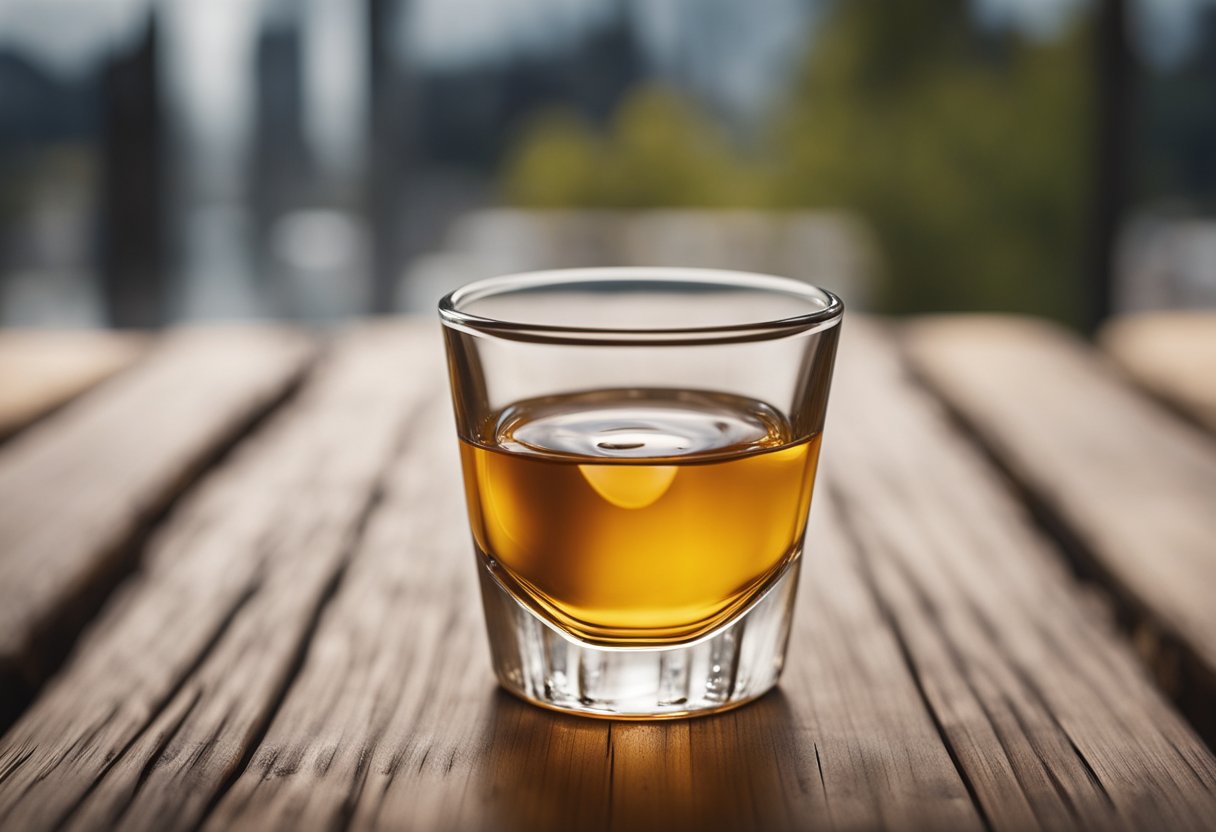
When it comes to selecting a quality tequila, there are a few things to consider. Here are some tips to help you choose the right one:
Look for 100% Agave Tequila
According to experts, the best tequilas are made from 100% agave. This means that the tequila is made entirely from the agave plant, without any added sugars or other additives.
When shopping for tequila, look for bottles that say “100% Agave” on the label. This will ensure that you are getting a high-quality tequila that is rich in flavor and free from any unwanted additives.
Consider the Flavor Profile
Tequila can have a wide range of flavors, depending on factors such as the type of agave used, the region it was produced in, and how it was aged. Some tequilas are sweeter and fruitier, while others are more earthy and smoky.
Consider the flavor profile you are looking for when selecting a tequila. If you prefer a richer, more complex flavor, look for tequilas that have been aged for longer periods of time.
Mexican Tequila
Authentic tequila comes from Mexico, and the best tequilas are often produced in the Jalisco region of Mexico. When selecting a tequila, look for bottles that are labeled “Hecho en Mexico” or “Made in Mexico” to ensure that you are getting an authentic, high-quality product.
Expensive Tequila
While there are many affordable tequilas on the market, some of the best tequilas can be quite expensive. Don’t be afraid to spend a little extra money on a high-quality tequila. The extra expense is often worth it for the rich, complex flavor and smooth finish that you will get from a premium tequila.
In conclusion, selecting a quality tequila is all about understanding the flavor profile you are looking for and choosing a product that is made from 100% agave.
Whether you prefer a sweeter, fruitier tequila or a more complex, smoky flavor, there is a tequila out there that is perfect for you.
Frequently Asked Questions

What are some popular tequila brands?
Some of the most popular tequila brands include Jose Cuervo, Patron, Don Julio, and Sauza. These brands are known for producing high-quality tequila that is enjoyed by many around the world.
What are some common flavor notes found in tequila?
Tequila has a unique flavor profile that is often described as sweet, citrusy, and spicy. The sweetness comes from the blue agave plant, which is the main ingredient in tequila.
The citrus flavor is a result of the agave and the fermentation process, while the spiciness can vary depending on the type of tequila and the aging process.
Is tequila supposed to taste good?
Tequila is an acquired taste, and not everyone enjoys it. However, if you appreciate the unique flavor profile of tequila, then it can be a very enjoyable drink. The taste of tequila can also vary depending on the quality of the tequila and how it is consumed.
What does tequila taste like for the first time?
For first-time tequila drinkers, it can be a bit of a shock to the taste buds. Tequila has a strong flavor that can be sweet, citrusy, and spicy all at once. Some people describe the taste as similar to a combination of vodka and whiskey, with a hint of sweetness.
How does tequila make you feel?
Tequila is known for its ability to make people feel energized and happy. It can also have a calming effect on the nerves and help people relax. However, it is important to drink tequila in moderation, as excessive consumption can lead to negative side effects.
Is tequila good to drink straight?
Tequila can be enjoyed straight, but it is not for everyone. Some people prefer to mix it with other ingredients to create cocktails, while others enjoy sipping it slowly to savor the flavors.
If you are new to tequila, it is recommended to start with a high-quality tequila and drink it slowly to appreciate the taste.


